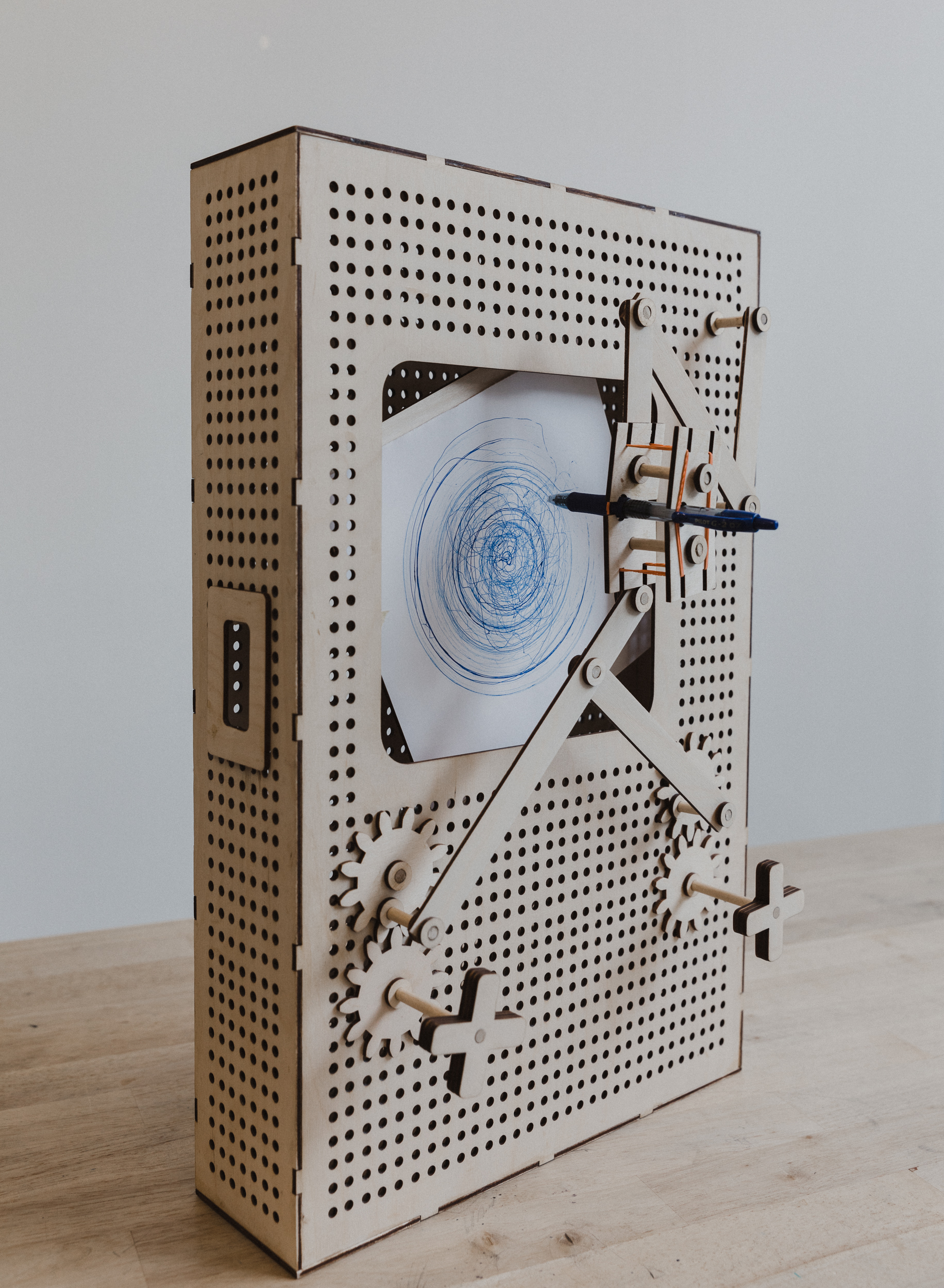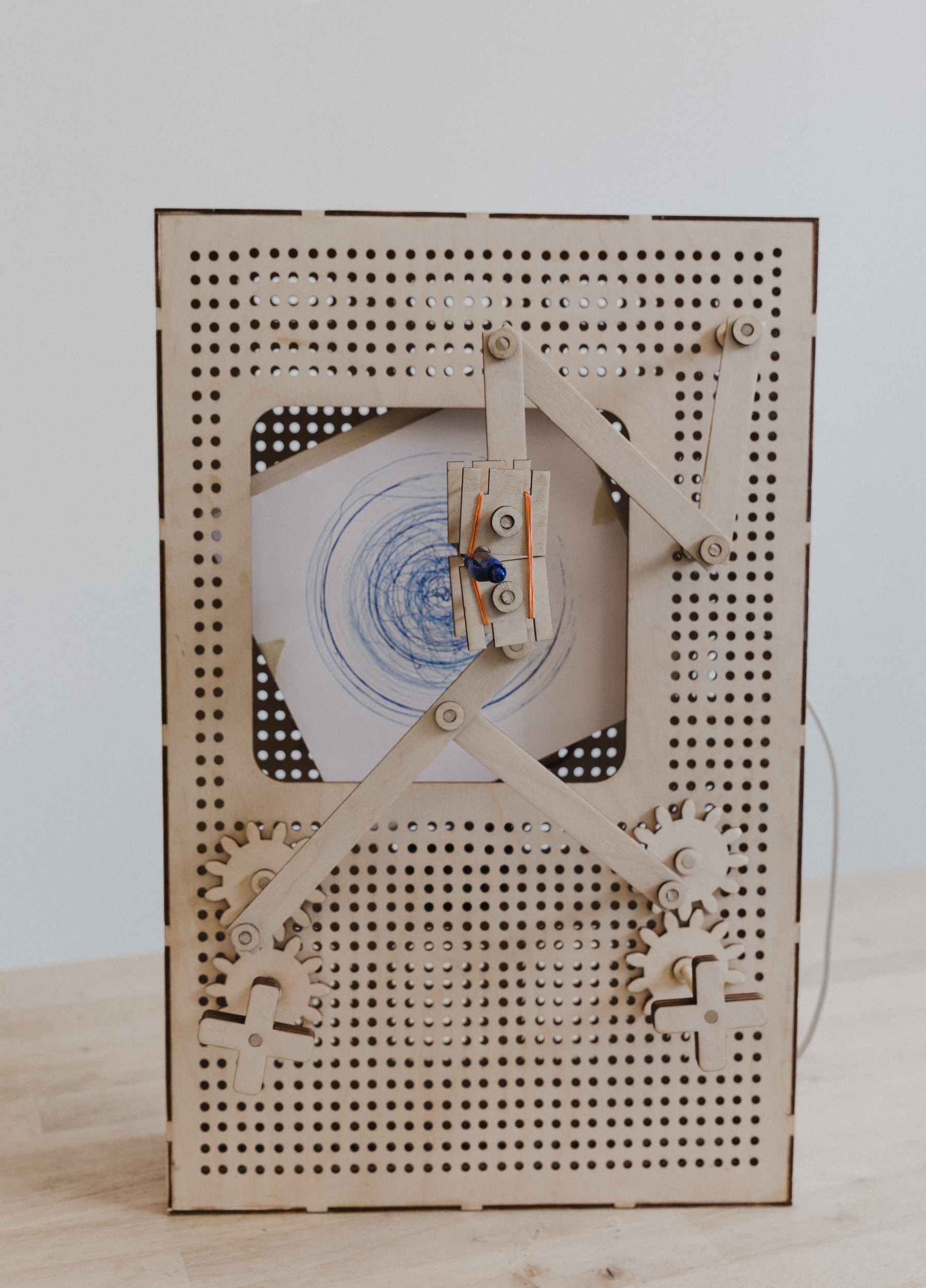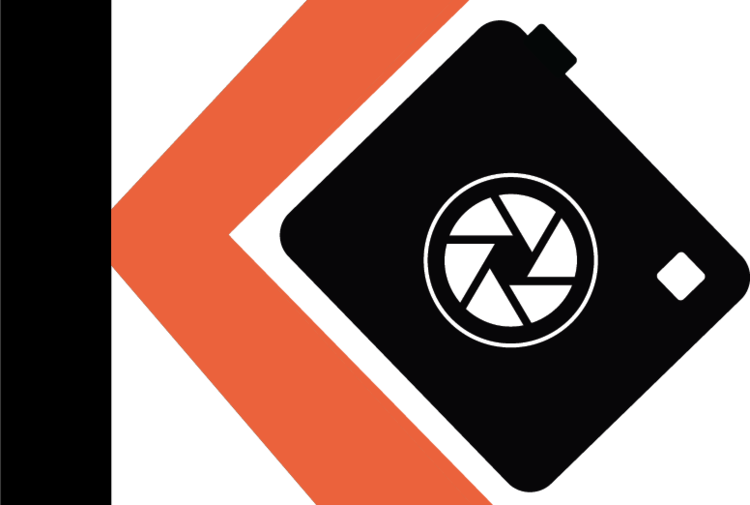




Initial Sketch
Watch The Game Sketch’s Journey in Action!
Final Prototype
Our final model began with a propped up box that concealed the mechanics below the canvas platform, while the interaction side provided handles for the user to hand-crank the arms atop the rotating platform. The hole design gave a clean, retro feel and reduced weight.
We re-designed the arms to allow for a wider range of motion and added a slot in the central piece in order for a pen holder to be securely placed. The back plate had a built in foundation to attach the canvas platform and a DC motor to plug in via Arduino and power the gears.
Our pen cartridge was designed to fit tightly into our machines arm mechanism, fastened together by rubber bands, allowing for adaptability by a variety of pen sizes.
See our sample renderings below!
Lo-Fi Iteration
This initial prototype allowed us to explore different ways to position the arms in order to allow easy movement across the canvas platform. Our initial concept was a fully-automated visual piece, but through this iteration, we came to the conclusion that having a hand-operable element (see hand cranks) would make the machine more interesting and interactive, and decided to just automate the canvas platform via a DC motor.












